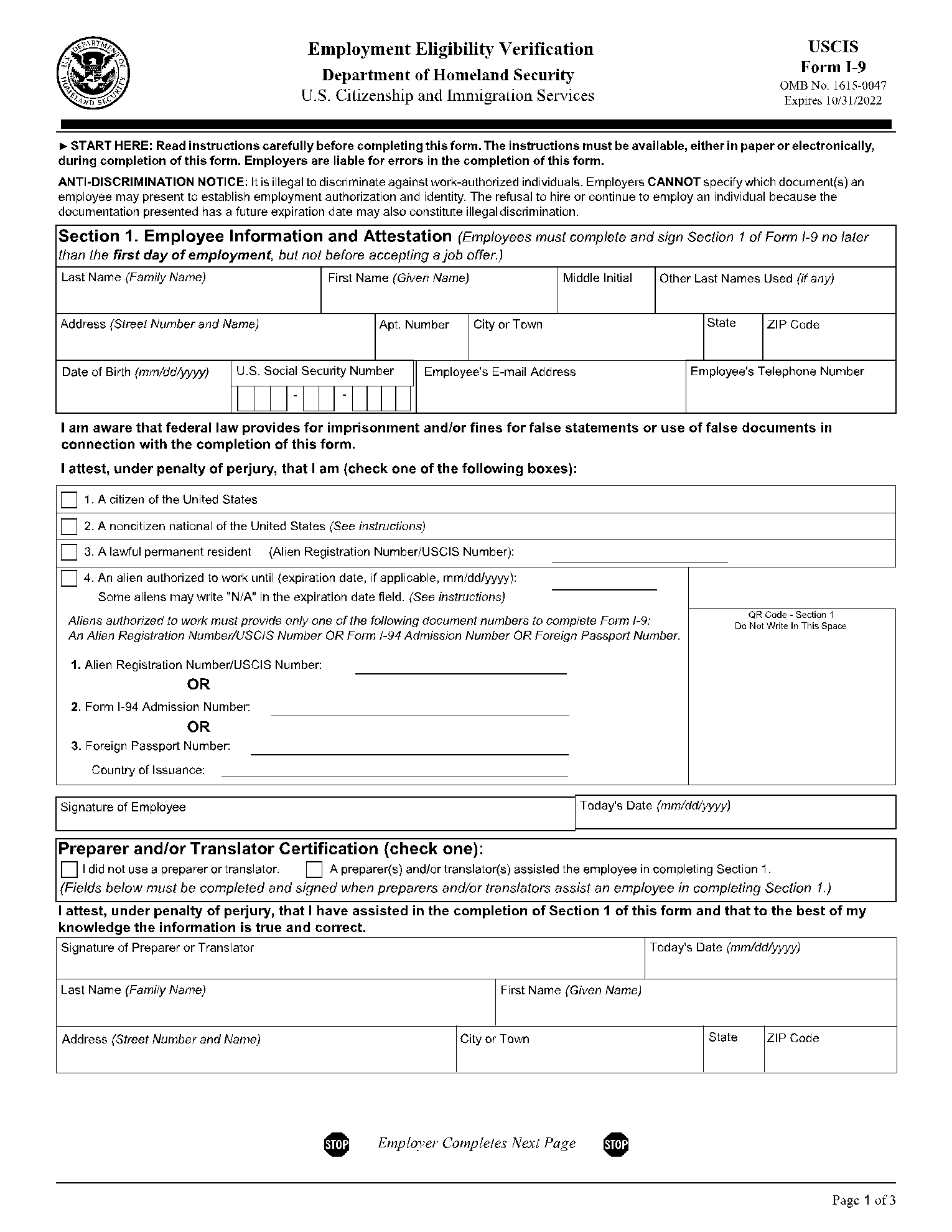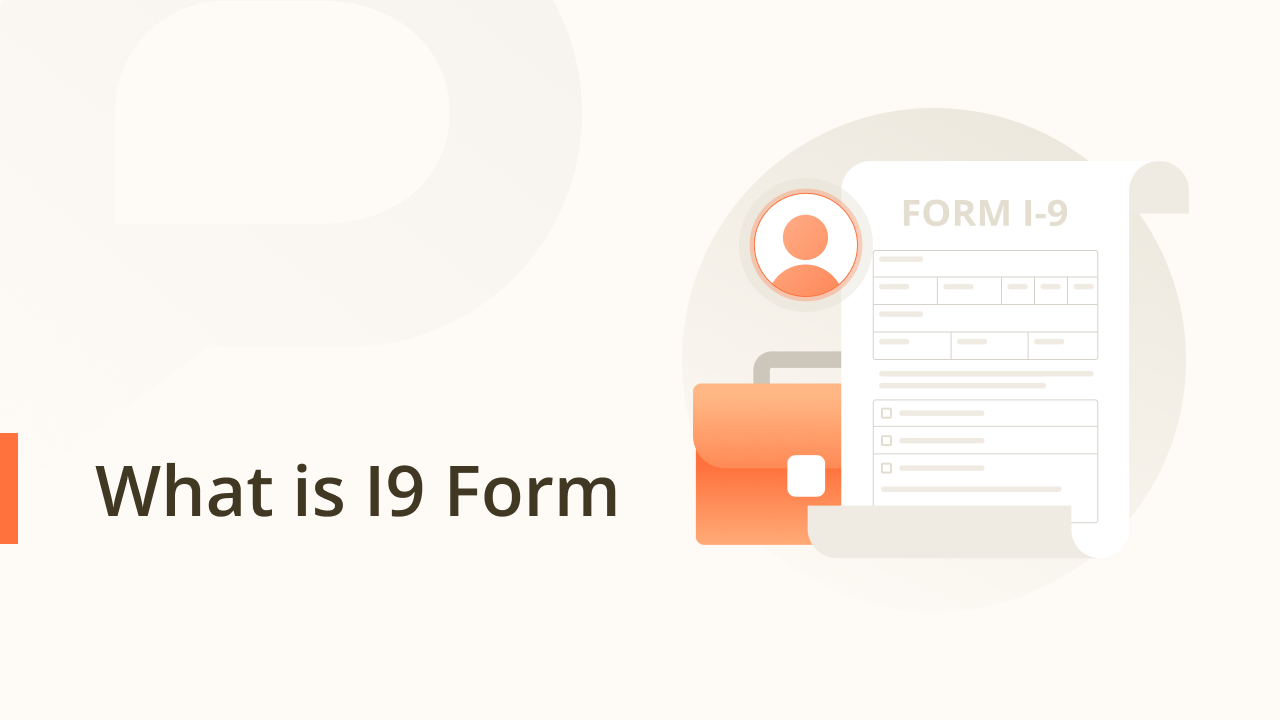Table of Contents
showSpending too much on recruitment, payroll or global HR?
We help you find the Best Providers at the lowest cost.
The I-9 form, or Employment Eligibility Verification, is crucial in the United States employment process. It is a mandatory form that all employers in the U.S. must complete for each individual they hire, regardless of citizenship or national origin. The purpose of Form I-9 is to verify employees’ identity and establish that they are eligible to work in the United States.
Key Takeaways
- Form I-9 is required for all U.S. employees to verify identity and work eligibility.
- Employers and employees are responsible for completing their respective sections of the form.
- Proper completion and retention of the I-9 form are critical for legal employment practices.
What is a Form I-9
Form I-9 is vital for ensuring that individuals are authorized to work in the United States, impacting employers and employees alike. The form requires accurate completion and proper retention to comply with federal regulations.
Download I-9 Form: I-9 Form Employment Eligibility Verification

Purpose and Legal Basis
The primary purpose of Form I-9, officially known as the Employment Eligibility Verification form, is to verify an individual’s identity and establish their eligibility to work in the United States. This process stems from the Immigration Reform and Control Act of 1986, which mandates that employers must confirm every employee’s legal right to work in the U.S., regardless of citizenship or immigration status. Federal law requires this verification to prevent unauthorized employment.
Relevant Entities and Documents
Form I-9 is required for all employers in the United States, whether hiring citizens or non-citizens. It also pertains to employees, including legal permanent residents and those with work authorization. The form completion involves presenting documents that prove identity and employment authorization, including a U.S. passport, a Permanent Resident Card (Permanent Residents), or other documents as categorized by the form’s instructions. The Department of Homeland Security (DHS), in conjunction with the United States Citizenship and Immigration Services (USCIS), oversees the compliance and enforcement of these requirements.
Completion and Retention Requirements
Employees must complete Section One of Form I-9 by their first day of employment. The employer or an authorized representative must review the employee’s document(s) and complete Section Two within three business days of the employee’s start date. Employers must retain Form I-9 for a certain period after the date of hire or the date of termination, whichever is later. According to USCIS regulations, the retention requirement is either three years after the hire date or one year after the employment ends, whichever is longer. Employers must have the completed forms available for inspection by authorized U.S. government officers.
The Verification Process
The Form I-9 employment eligibility verification is a critical process for confirming that individuals are authorized to work in the United States. This process requires both the employee and the employer to fill out separate sections, providing necessary documentation to establish identity and employment authorization.
Employee Information and Attestation
The employee must provide personal details in the first part of the verification process. These include their full legal name, date of birth, address, and Social Security Number. Additionally, they must attest to their citizenship status, indicating whether they are a citizen of the United States, a non-citizen national, a lawful permanent resident, or an alien authorized to work. Employees are then required to sign the form, affirming under penalty of perjury the accuracy of the information provided.
Employer Review and Verification
Upon completing the employee section, employers are responsible for reviewing the provided documents and completing their form portion. They must verify that the documents presented by the employee appear genuine and relate to the employee presenting them. This entails physically examining one or more documents from List A, which establishes identity and employment authorization or one document from List B, which establishes identity, in conjunction with one document from List C, which establishes employment authorization. Employers must record the document title(s), issuing authority, document number, and expiration date if applicable.
List A, B, and C Documents
- List A documents confirm the employee’s identity and eligibility to work in the United States. Examples include a U.S. passport, a Permanent Resident Card, or an Employment Authorization Document.
- List B documents only demonstrate the employee’s identity, such as a driver’s license or ID card.
- List C documents affirm employment authorization and include a Social Security Number card or a U.S. birth certificate.
The verification process is essential to ensure that all individuals employed in the United States are duly authorized to do so, upholding the legal framework and integrity of the employment system.
Special Considerations and Compliance
Employers must navigate complex requirements when completing the I-9 form. They must verify eligibility to work in the U.S. and adhere to anti-discrimination laws. This careful balance calls for attention to specific procedures and regulations to maintain compliance.
Reverification and Rehires
Reverification must occur when an employee’s work or work authorization documentation expires. Employers should record the rehire date in Section 3 of the I-9 form if rehiring an employee within three years of the date the form was originally completed. This process helps confirm that the rehired employee remains eligible to work in the U.S. without requiring the completion of a new I-9 form.
Anti-Discrimination Policies and Practices
The Department of Justice mandates employers to follow anti-discrimination practices. Employers are prohibited from discriminating against employees based on their citizenship status or national origin concerning hiring, firing, or recruitment. The I-9 form should be completed without bias, and all employees, regardless of national origin or citizenship, must be treated equally.
Handling of False Documents and Penalties for Non-Compliance
Employers must examine the documents presented by employees and do so under the penalty of perjury. They are not responsible for identifying false documents that reasonably appear genuine; however, if they knowingly accept them, criminal penalties and fines may apply. The U.S. Citizenship and Immigration Services (USCIS) and other federal authorities impose penalties for non-compliance with the I-9 requirements, which could include significant fines and legal challenges.


